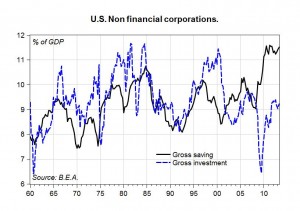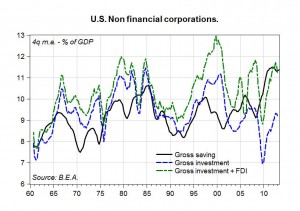I recently had the great fortune to listen to a speech delivered by Mr Yves Mersch, Member of the Executive Board of the European Central Bank. This was in Athens on November 8 at the first Minsky Conference in Greece organized by the Levy Economics Institute. The title of the conference was “The Eurozone crisis, Greece, and the Austerity Experience.” The conference was well attended by the interested public. As is typical of Minsky conferences, annually held in the United States, it brought together academic scholars, financial market practitioners, journalists, as well as policymakers, including Mr. Mersch, whose speech was titled “Intergenerational justice in times of sovereign debt crises” (see here). Mr Mersch played part in the negotiations of the Maastricht Treaty and has served as the Governor of the Central Bank of Luxembourg since its formation in 1998, before joining the ECB’s Executive Board last year.
Apart from lauding Greece’s pension reforms as measures that were necessary in view of demographic trends, Mr Mersch hailed Greece’s achievements in closing its fiscal deficit as “remarkable,” describing the Greek austerity experience as a “fiscal adjustment of historic proportions.” That it truly was, and Mr Mersch was keen to emphasize that the “extraordinary efforts” undertaken by the Greek people refuted the naysayers and proved wrong prophetic claims heard in May 2010 that Greece would leave the euro area within months. Mr Mersch acknowledged that record-high unemployment was a “tragedy,” only to go on to assert that “this is the painful cost of reversing the misguided economic policies and lack of reforms in the past.”
And, of course, more of the same would be needed, according to Mr Mersch: more fiscal consolidation, more structural reforms, and lower wages and prices in order to increase external competitiveness and facilitate an export-led recovery, as Greece’s “external sector must go into surplus.” This may be painful, “but we are in a monetary union and this is how adjustment works.” In addition to more wage-price deflation, Mr Mersch singled out the need to restore the health of Greek banks and the need for attracting more foreign investment as the other key ingredients that would deliver adjustment and recovery in Greece.
During the Q&A session following his speech I asked Mr Mersch whether there might not be a conflict between, on the one hand, emphasizing the need of healthy banks that would fund the recovery and, on the other hand, prescribing more wage-price deflation. Since a deflationary environment was not exactly known as a factor that would tend to improve the health of banks. And I also asked him why the ECB was tolerating such a significant undershooting of its 2 percent stability norm while calling for even more wage-price deflation in crisis countries – instead of going for higher inflation in current account surplus countries such as Germany. At least to me it seemed obvious that a properly stability-oriented central bank should much prefer inflation in surplus countries to be sufficiently high so as to enable the bank to actually meet its mandate, that is, 2 percent HICP inflation on average across the currency union, over an outcome where even Germany has an inflation rate that is well below 2 percent, with the ECB ending up sharply missing its self-defined target in the downward direction.
Mindless austerity or stability-oriented austerity?
Mr Mersch’s answers were very interesting. continue reading…







 ShareThis
ShareThis